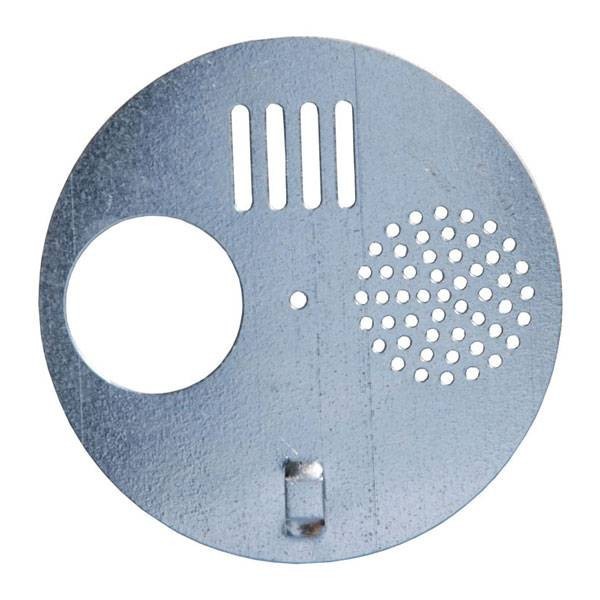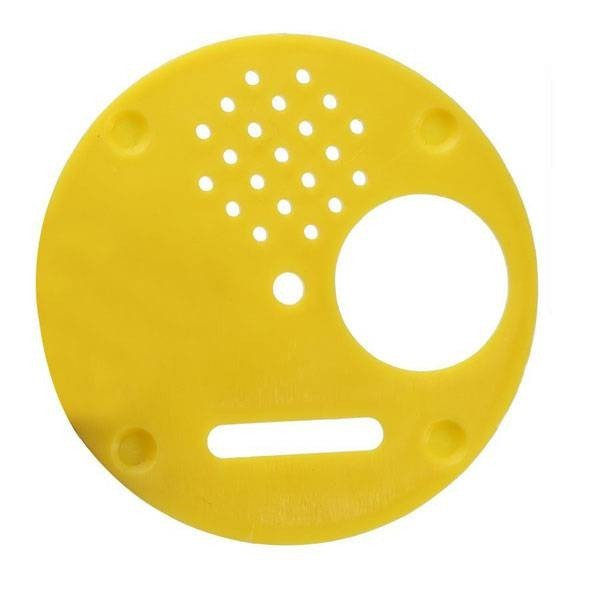Upper entrances to beehives are a divisive topic among beekeepers. Some maintain that they are the best invention since sliced bread, while others contend that they are an efficient way to kill your colony. There is no right or wrong answer, but it is important to weigh the pros and cons before making a decision about whether or not to use an upper entrance. Some advantages of upper entrances include increased ventilation and decreased chances of mice or other predators entering the hive. However, upper entrances can also make it more difficult to control the temperature inside the hive, and if not managed properly, can lead to bees becoming trapped and dying. Ultimately, the decision of whether or not to use an upper entrance should be based on the specific needs and goals of the beekeeper.
Most likely, the truth lies in the middle when it comes to the effectiveness of beehive upper entrances. Your local patterns of wind, rain, and temperature will dictate how effective or how detrimental beehive upper entrances can be. However, in general, beehive upper entrances can be beneficial in helping bees to regulate the temperature of their hive.
I find that Beehive Upper entrances work best during the height of nectar flow and during the winter, but I close them for the worst of swarm season and just before the summer nectar dearth. By doing this, I can control the amount of traffic coming into and out of my hive, and ensure that my bees have what they need.
The nectar flow is when bees are collecting nectar from flowers to make into honey. I provide upper entrances to the beehive during this time so that the bees collecting nectar can come back into the hive without going through the queen excluder. This helps the bees to be more efficient in their honey collection and prevents them from getting stuck on the other side of the excluder.
Bees are amazing creatures that have a lot to teach us about working together for the greater good. When it comes to raising their young, they know that it takes a community to raise a child and they have no problem sharing the responsibilities. While the queen bee stays in the hive to lay eggs and care for the brood, the pollen foragers go out into the world to gather food. This arrangement benefits both the bees and the hive, as it allows the bees to focus on what they're good at while ensuring that the hive has the resources it needs to thrive.
If you have an apiary, it's important to know when to close the upper entrances to your hive. This is typically done during nectar dearth, which is a period of time when there is less nectar available for bees to collect. By closing the upper entrances, you can prevent bees and wasps from robbing the hive, which can lead to a decline in the hive's population. The upper entrances should remain closed until winter.
Adding a moisture quilt on top of the beehive helps to regulate the temperature and humidity inside the hive and prevents the formation of condensation on the underside of the covers. The Imirie shim helps to provide ventilation and allows some of the moist air to escape, helping to keep the hive at a comfortable temperature for the bees.
It's important to close the beehive entrances towards early spring because colonies tend to get smaller and more compact as the winter wears on. Doing this will prevent a newly-mated queen from getting stuck above the queen excluder if she tries to return to the hive through the upper entrance.
Constant management
I spend a lot of time plugging and unplugging beehive upper entrances. I've made it as easy as possible with an assortment of plastic and wooden plugs that fit the holes. It's a necessary task to keep the bees from getting out, and to protect them from the elements. I'm happy to do it, because it means I get to spend time with these amazing creatures.
If you don't mind your beehive upper entrances, you can end up with robbed bees and yellow jacket attacks. Even though there are many potential problems with this approach, I keep doing it because it has worked well for me in my climate. It provides excellent overwintering success and beautiful combs of honey.
The Upstairs Downstairs Hive Intrance
Somebeekeepers believe that the standard Langstroth entrance, located at the bottom of the hive, allows for too much draft and ventilation. Consequently, they argue, this causes the bees to use more energy to keep the hive warm. In addition, they contend that the standard entrance also allows for more pests and predators to enter the hive. As a result, these beekeepers often use upper entrances, which they believe provide many benefits.
The standard beehive entrance is a Bee management tool that helps ensure that the brood nest is not disturbed. By directing all bee movement through the brood nest, the standard beehive entrance prevents bees from becoming lost or disoriented and ensures that the hive is kept clean.
The standard beehive entrance is a circular hole that is about 3/4 inch in diameter. The hole is located at the bottom of the hive and is used by the bees to enter and exit the hive. The hole is surrounded by a metal or plastic guard that is used to keep out larger insects, such as wasps. The guard also helps to keep the bees from accidentally flying out of the hive.
The standard beehive entrance allows the passage of mice, slugs, shrews, and other pests. By increasing the size of the entrance, these pests are less likely to enter the hive and cause problems.
the number of bees coming and going.The entrance to a standard beehive is typically a small hole located at the bottom of the hive. This hole is placed there so that the beekeeper can regulate the number of bees coming and going. However, this can often be difficult to do, as the bees can swarm around the entrance, making it hard to keep track of them.
Your better entrances
I really like the design of the internal entrance. The bee space is taken into account in all the measurements to prevent propolis build up and burr comb. The internal space to too small for mice and other small mammals to enter, and even wasps and wax moths are repelled because the small internal entrance is easy for your bees to defend.
The vestibule-like design also reduces drafts through the entrance. In fact, it virtually turns the cold-way set up of the standard Langstroth into a warm-way set up. This is because the inner cover is moved up closer to the top bars, and the outer cover is moved down closer to the bottom bars. By doing this, you are essentially creating a barrier between the outside and the inside of the hive.
As soon as air comes into the hive, it hits a wall of solid plastic. This weakens the strength of any draft that may find its way in, and helps to keep the hive warm and comfortable for the bees.
Bee colonies come in all sorts of sizes, from tiny to absolutely massive. Obviously, the size of the colony will affect the amount of honey that they're able to produce. But it's not just the size of the colony that determines productivity. The temperament of the bees also plays a role. Some colonies are just naturally more productive than others. And finally, the type of hive that the colony is living in can also affect productivity. Some hives are simply better designed for honey production than others.
Building flexibility into your hives allows you to easily adjust the openings to suit the individual colony. This makes sense because it allows the colony to regulate the temperature and ventilation based on their needs. Additionally, it prevents bees from becoming too hot or too cold, which can lead to health problems.
Most beekeepers are familiar with the concept of bees having multiple entrances to their hive. However, they may not be aware of just how many entrances there can be. These can be numerous, but you hardly notice they exist until you close the bees' main entrance. Then, all of a sudden, alternate entrances are everywhere and beekeepers can spend days trying to find them all.
It's interesting to think about how bees must use entrance location, orientation, and width to control airflow and temperature in their hive. If a bee colony is using an entrance that is too small, they may not be able to regulate the temperature inside the hive properly. On the other hand, if the entrance is too large, they may not be able to keep pests and predators out.
Common Beehive Entrance
Metal Beehive Entrance Disc Wholesale
Wide variety of applications in one piece of beehive entrance disc! Simply mount with a screw (not included).

Plastic Beehive Entrance Disc Wholesale
These discs fit snugly over the entrance to your hive, keeping out debris and pests. They also help to regulate the temperature inside the hive, which is critical for the bees’ health.

